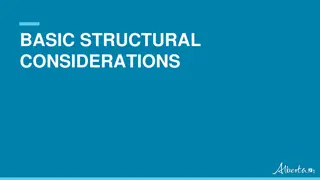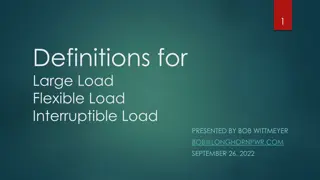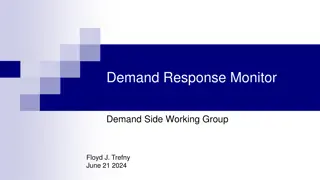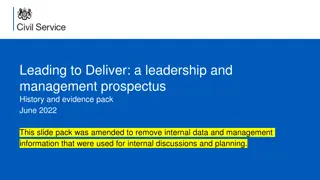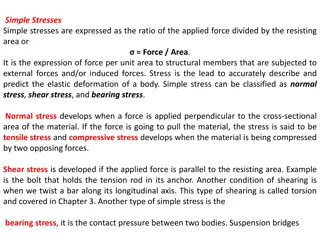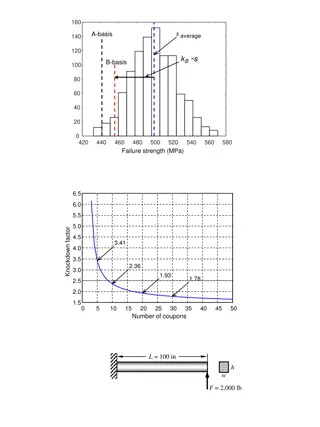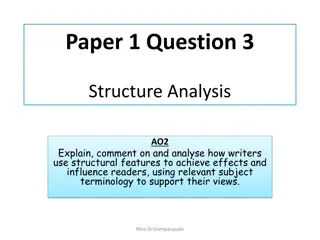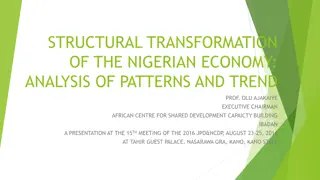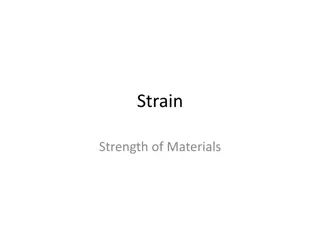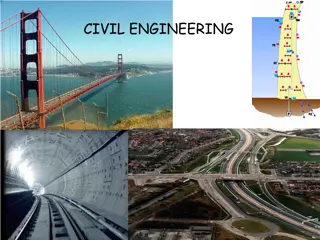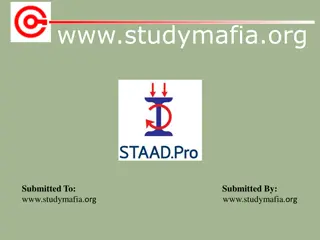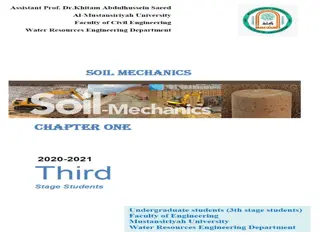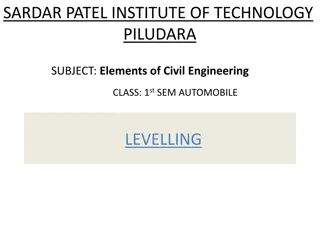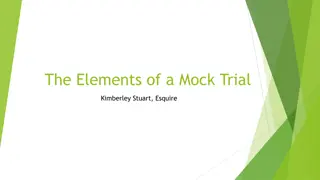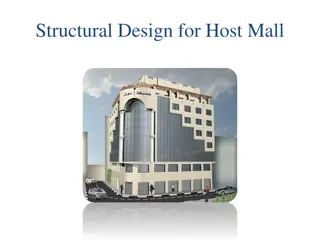Understanding Structural Loads in Civil Engineering
Structural loads in civil engineering encompass dead loads from permanent structures, live loads that vary in magnitude and location, impact factors influencing rapid load application, wind loads due to blocked airflow, earthquake loads, and hydrostatic pressures for water-retaining structures. These loads are essential considerations in structural design to ensure safety and stability of buildings and other constructions.
Download Presentation

Please find below an Image/Link to download the presentation.
The content on the website is provided AS IS for your information and personal use only. It may not be sold, licensed, or shared on other websites without obtaining consent from the author. Download presentation by click this link. If you encounter any issues during the download, it is possible that the publisher has removed the file from their server.
E N D
Presentation Transcript
STRUCTURAL LOADS Dead Load Dead loads consist of the weights of the various structural members and the weights of any objects that are permanently attached to the structure. Hence, for a building, the dead loads include the weights of the columns, beams, and girders, the floor slab, roofing, walls, windows, plumbing, electrical fixtures, and other miscellaneous attachments. 1st Year - Civil Theory of Structures - Lecture (1)
STRUCTURAL LOADS Live Load Live Loads can vary both in their magnitude and location. They may be caused by the weights of objects temporarily placed on a structure, moving vehicles, or natural forces. The minimum live loads specified in codes are determined from studying the history of their effects on existing structures. 1st Year - Civil Theory of Structures - Lecture (1)
STRUCTURAL LOADS Impact When live loads are applied rapidly to a structure, they cause larger stresses than those that would be produced if the same loads would have been applied gradually. The dynamic effect of the load that causes this increase in stress in the structure is referred to as impact. To account for the increase in stress due to impact, the live loads expected to cause such a dynamic effect on structures are increased by certain impact percentages, or impact factors. The impact percentages and factors, which are usually based on past experience and/or experimental results, are specified in the building codes. For example, the ASCE 7 Standard specifies that all elevator loads for buildings be increased by 100% to account for impact. 1st Year - Civil Theory of Structures - Lecture (1)
STRUCTURAL LOADS Wind Load When structures block the flow of wind, the wind s kinetic energy is converted into potential energy of pressure, which causes a wind loading. The effect of wind on a structure depends upon the density and velocity of the air, the angle of incidence of the wind, the shape and stiffness of the structure, and the roughness of its surface. 1st Year - Civil Theory of Structures - Lecture (1)
STRUCTURAL LOADS Earthquake Load An earthquake is a sudden undulation of a portion of the earth s surface. Although the ground surface moves in both horizontal and vertical directions during an earthquake, the magnitude of the vertical component of ground motion is usually small and does not have a significant effect on most structures. It is the horizontal component of ground motion that causes structural damage and that must be considered in designs of structures earthquake-prone areas. located in 1st Year - Civil Theory of Structures - Lecture (1)
STRUCTURAL LOADS Hydrostatic and Soil Pressures Structures used to retain water, such as dams and tanks, as well as coastal structures partially or fully submerged in water must be designed to resist hydrostatic pressure. Hydrostatic pressure acts normal to the submerged surface of the structure, with its magnitude varying linearly with height, as shown in Fig. 2.9. Thus, the pressure at a point located at a distance h below the surface of the liquid 1st Year - Civil Theory of Structures - Lecture (1)




